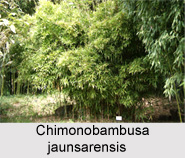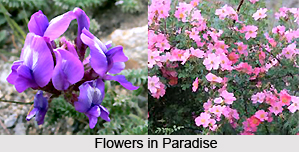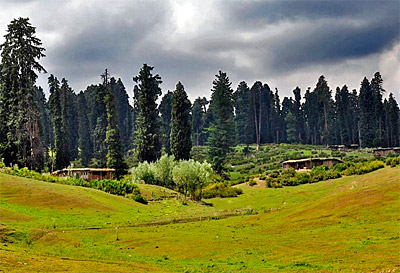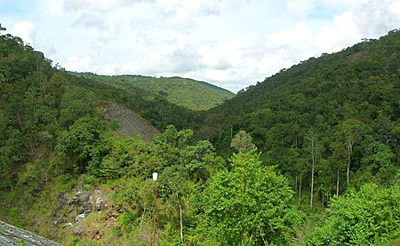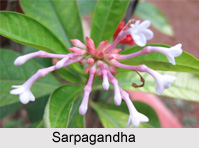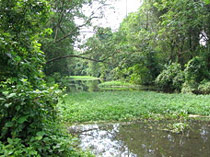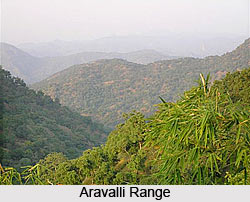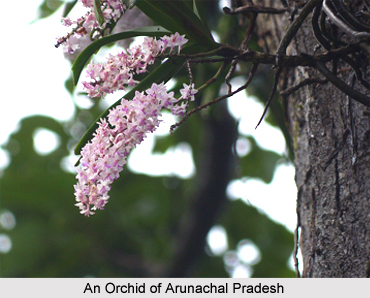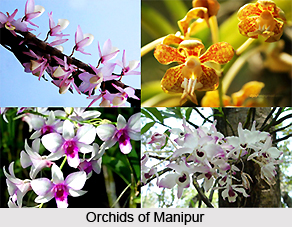Akasavalli or Akashabela has the botanical name of Cuscuta reflexa Roxb and it is a common Indian medicinal plant. The plant is called as Dodder in English. It has many names in different Indian languages like Bengali, Hindi, Punjabi, Sanskrit, Oriya, Tamil or Telugu, as well. The Bengali speaking people call the name as Algusi or Swarnalata; and apart from Akashabela, it is also called as Akashbel, Amarbel and Kashavela in Hindi. The people who speak Marathi know the plant as Amarvela, Nirmuli, Nir-Muliakashavela, while the Punjabi speaking population named it as Amil, Nilathari, Niradhar and Zarbuti. Akasavalli is actually the Sanskrit name of the plant and it is known as Amaravela or Khavalli, in Sanskrit, as well. While the Tamil speaking people call the plant as Kodiyagundal or Sadadari, the people in Telugu call it as Lanjasavaramu, Savarapukada, Sitam- Mapogunalu and Sitasavararau.
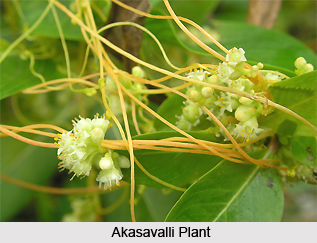 The parasitic climber shrub, Akasavalli or Akashabela has yellowish-green stems that are up to 2.5 mm in diameter. The stems sometimes completely cover the bushes and tree crowns. The leaves of the plant have been reduced to minute scales and the plant`s small flowers are off white or pinkish colour. They remain solitarily or in clusters or in short racemes, accompanied by small, fleshy, sub-quadrate bracts. The corolla of the plant is campanulate, having a length of 0.6-1 cm. The unripe fruits or capsules of the plant are depressed-globose, fleshy and have a diameter of 0.6 cm. They are acute and have black marks or warts, while the seeds of the plant are of black colour. The plant usually flowers from the month of October to January and fruits from December to February. Akasavalli or Akashabela dies down during the dry, hot season. The plant is a native to the Indo-Malaysia region and it is commonly found throughout most of India. The plant is mostly found to an elevation of about 2500 m as a parasite on a variety of tree and it can be found on roadsides and in villages, as well.
The parasitic climber shrub, Akasavalli or Akashabela has yellowish-green stems that are up to 2.5 mm in diameter. The stems sometimes completely cover the bushes and tree crowns. The leaves of the plant have been reduced to minute scales and the plant`s small flowers are off white or pinkish colour. They remain solitarily or in clusters or in short racemes, accompanied by small, fleshy, sub-quadrate bracts. The corolla of the plant is campanulate, having a length of 0.6-1 cm. The unripe fruits or capsules of the plant are depressed-globose, fleshy and have a diameter of 0.6 cm. They are acute and have black marks or warts, while the seeds of the plant are of black colour. The plant usually flowers from the month of October to January and fruits from December to February. Akasavalli or Akashabela dies down during the dry, hot season. The plant is a native to the Indo-Malaysia region and it is commonly found throughout most of India. The plant is mostly found to an elevation of about 2500 m as a parasite on a variety of tree and it can be found on roadsides and in villages, as well.
There are several medicinal properties and usages of Akasavalli or Akashabela plant. The whole plant and seeds of the plant are widely used in traditional Indian medicine like Ayurveda and Unani. The Ayurvedic practitioners consider the plant to be aphrodisiac, alterative and tonic, and use it in the treatment of eye and heart diseases. The seeds of the plant are widely used as a demulcent, diaphoretic and tonic and their cold infusion is considered carminative and depurative. The practitioners of Unani medicine consider the herb as expectorant, carminative, tonic, anthelmintic, purgative, diaphoretic and diuretic. They use the plant for treating the diseases like jaundice, muscle and joint pains, headache, paralysis, diseases of the spleen, vomiting and lumbago. They also use the plant`s seeds to treat liver and spleen diseases and fevers and the infusion of the seeds is used for ophthalmia and a decoction of the seeds is used for biliousness and as a purgative.
The Indian people orally take the aqueous extract of Akasavalli or Akashabela plant for treating of Spermatorrhoea, after crushing it with black pepper. The plant`s stem is a purgative and its decoction is used to relieve bilious affections. The stem is applied externally for treating skin diseases, as well. The people externally use the extracts of the plant, for getting relief from itches, and they also use the extract internally for relieving protracted fever, flatulence, diphtheria, liver disorders, and to expel hookworms. Many people use an infusion of the plant for washing ulcers and to relieve dermatitis and they use the fruits to treat cough and fever, as well. When used in combination with other plant drugs, like Centella asiatica (Apiaceae), the fruit of Vitex penduncu-laris (Lamiaceae), and black pepper, Akasavalli or Akashabela plant is considered as a contraceptive among Kondh women in southwestern Orissa. The tribal inhabitants of southern Bihar use a paste of the plant to promote healing of tongue ulcers, as well.
